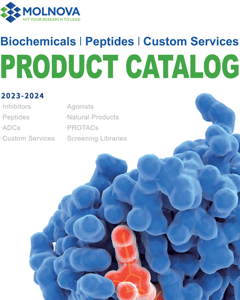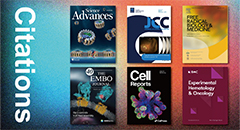
3-Deoxyglucosone
CAS No. 4084-27-9
3-Deoxyglucosone( —— )
Catalog No. M33580 CAS No. 4084-27-9
3-Deoxyglucosone(3-Deoxy-D-glucosone) is synthesized by the intermediate pathway of the melad and polyol reactions.
Purity : >98% (HPLC)
 COA
COA
 Datasheet
Datasheet
 HNMR
HNMR
 HPLC
HPLC
 MSDS
MSDS
 Handing Instructions
Handing Instructions
| Size | Price / USD | Stock | Quantity |
| 2MG | 286 | Get Quote |


|
| 5MG | 454 | Get Quote |


|
| 500MG | Get Quote | Get Quote |


|
| 1G | Get Quote | Get Quote |


|
Biological Information
-
Product Name3-Deoxyglucosone
-
NoteResearch use only, not for human use.
-
Brief Description3-Deoxyglucosone(3-Deoxy-D-glucosone) is synthesized by the intermediate pathway of the melad and polyol reactions.
-
Description3-Deoxyglucosone (3-Deoxy-D-glucosone) is a reactive intermediate of the Maillard reaction and the polyol pathway. 3-Deoxyglucosone rapidly reacts with protein amino groups to form advanced glycation end products (AGEs), such as imidazolone, it is the most specific AGE for 3-DG. 3-Deoxyglucosone synergizes with low glucose to potentiate GLP-1 secretion and is considered as a biomarker for diabetes.
-
In Vitro3-Deoxyglucosone (80 ng/ml-1000 ng/ml; 1 hour) markedly increases GLP-1 secretion by 1.23-folds in 300?ng/ml or 1000?ng/ml 3DG-treated group. But at alower concentration (80?ng/ml) has no effects.3-Deoxyglucosone (300 ng/ml; 1 hour) dramatically increases intracellular Ca2+ levels by Fluo-3/AM determination (2.5?μM for 30 mins). But 3DG does not affect intracellular cAMP levels in a cAMP Elisa assay.3-Deoxyglucosone (300 ng/ml; 1 hour) significantly increases the protein expression levels of TAS1R2, TAS1R3, and TRPM5 under both glucose-free and highconditions.Western Blot Analysis Cell Line:STC-1 cells Concentration:300?ng/ml Incubation Time:1 hour Result:Upregulated TAS1R2, TAS1R3, and TRPM5 expression.
-
In Vivo3-Deoxyglucosone (intragastric administration; 20 mg/kg; single dose)?impairs glucose tolerance with increased AUC, but the plasma glucagon levels are not significantly different. It developes impaired glucose regulation (IGR) with obviously pancreatic islet cell dysfunction in kunming mice and SD-rats.3-deoxyglucosone?(gastric gavage; 5-50 mg/kg; once daily; 2 weeks) is significantly increased in the upper small intestine (1.4-fold), lower small intestine (1.4-fold), ileum (1.4-fold) and colon (two fold) compared with the basal levels in the corresponding control group. In addition, the protein expressions of TAS1R2, TAS1R3 and TRPM5 in both duodenum and colon are significantly decreased.Animal Model:SD rats Dosage:5, 20 and 50 mg/kg Administration:oral administration; once daily; 2 weeks Result:Was capable of accumulating in?intestinal?tissue?and thereby decreased?secretion?of?GLP-1?and insulin. ?
-
Synonyms——
-
PathwayOthers
-
TargetOther Targets
-
RecptorGPX | Glucagon Receptor
-
Research Area——
-
Indication——
Chemical Information
-
CAS Number4084-27-9
-
Formula Weight162.14
-
Molecular FormulaC6H10O5
-
Purity>98% (HPLC)
-
Solubility——
-
SMILES[C@H](CC(C=O)=O)([C@@H](CO)O)O
-
Chemical Name——
Shipping & Storage Information
-
Storage(-20℃)
-
ShippingWith Ice Pack
-
Stability≥ 2 years
Reference
1. Song X, et al. 3-Deoxyglucosone Induces Glucagon-Like Peptide-1 Secretion from STC-1 Cells via Upregulating Sweet Taste Receptor Expression under Basal Conditions.Int J Endocrinol.?2019?Oct 23;2019:4959646.?
molnova catalog



related products
-
Pulsatilla saponin H
Pulsatilla saponin H is a natural product isolated from the Roots of Pulsatilla koreana.
-
Ginsenoside MC
Ginsenoside MC is a natural product for research related to life sciences.
-
Amaronol B
Amaronol B is a natural product found in?Pseudolarix amabilis?and?Larix kaempferi?with data available.



 Cart
Cart
 sales@molnova.com
sales@molnova.com


